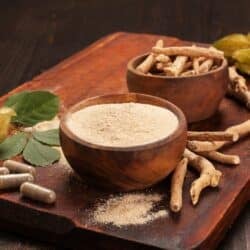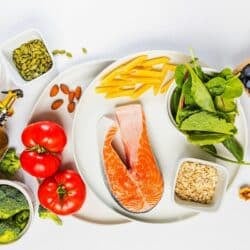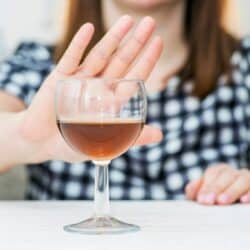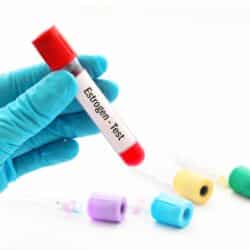PCOS and Endometriosis (Differences and Treatments)
PCOS and Endometriosis are female reproductive disorders that can affect a woman’s fertility, health, and quality of life. In this article, we’ll compare and contrast both PCOS and Endometriosis, with a discussion of some treatment options for both conditions.

PCOS Overview
Polycystic ovary syndrome (PCOS) is a hormonal disorder affecting women. Women with PCOS usually have higher levels of androgens than their non-PCOS female counterparts. Androgens are male sex hormones that are usually only present in women in small amounts.
This imbalance in androgen levels causes problems in the ovaries when the egg produced each month as part of the menstrual cycle may not develop properly or may not be released during ovulation as it should.
The result is missed or unpredictable periods, which may lead to fertility problems.
The condition is known as “polycystic” ovary syndrome because irregular periods can also lead to the appearance of cysts in the ovaries. However, not all women with the condition will have the appearance of cysts on an ultrasound.
Some women with PCOS are insulin resistant, which means that their bodies can make insulin but don’t use it efficiently. This increases their risk of developing type 2 diabetes.
PCOS is a common condition, affecting between 5 to 10 percent (around 5 million) of women in the United States and between 4 to 20 percent of women of reproductive age worldwide. It is also one of the leading causes of female infertility.
In addition to missed periods, the symptoms of PCOS can include:
- Thinning hair on the scalp
- Skin tags
- Weight gain
- Acne or oily skin
- Darkening of the skin in certain areas (particularly underneath the breasts, in the groin, and along the creases of the neck)
- Hirsutism (excess hair) in areas such as the face, chin, breasts, buttocks, and/or back
Endometriosis Overview
Endometriosis is a condition where tissues similar to those that line the uterus (endometrium) are found elsewhere in the body – usually around the ovaries, fallopian tubes, and pelvis lining.
Occasionally, endometrial tissue may be found outside the pelvic area altogether.
It can be a very painful condition because these tissues continue to react in the same way that they would if they were in the uterus. This means that they thicken, then break down and bleed with every monthly cycle.
The problem is that – unlike the cells in the womb that exit the body during a period – the blood from this tissue becomes trapped. This leads to inflammation, not only triggering pain, but causing scar tissue and adhesions to form. If the ovaries are involved, it can also lead to the development of cysts called endometriomas.
The condition – which affects approximately 6.5 million women in the United States and 190 million women globally – can lead to fertility problems and can have quite an impact on a woman’s life.
Endometriosis symptoms can include:
- Painful periods (known as dysmenorrhea), with cramping and/or lower back pain sometimes starting a few days before a period and lasting for several days
- Extremely heavy periods
- Pain when urinating or during a bowel movement (usually during menstruation)
- Pain during or after sex
- Bloating, diarrhea, constipation, or nausea
- Fatigue
Similarities Between PCOS & Endometriosis
The main similarities between PCOS and endometriosis lie more in their symptoms than in the conditions themselves.
Both can cause irregular, heavy, or painful periods and both can lead to fertility problems. Indeed, medical experts will usually check for either condition when infertility issues arise.
Other similarities are that both conditions affect between 5 to 10 percent of women of childbearing age and both can be quite difficult to diagnose. But – on a more positive note – there are various treatments that can make either condition manageable.
Differences Between PCOS & Endometriosis
Although both PCOS and endometriosis can result in similar symptoms, the conditions themselves are entirely unique. PCOS is caused by a hormonal imbalance and endometriosis is caused by an abnormal growth of tissues outside the uterus.
Despite the similarity of the symptoms, some are more common with one condition than the other. For example, severe pain is more likely to be a symptom of endometriosis, whereas irregular periods are more commonly associated with PCOS.
Symptoms such as excessive facial hair and acne are unique to PCOS because they are indications of a problem with the hormones.
See my related article on the Best Tea for PCOS Symptoms.
Can a Woman Have Both PCOS & Endometriosis?
While it is relatively rare, it is possible to have PCOS and endometriosis at the same time.
Research published in 2014 showed a significant link between endometriosis and women who had PCOS with pelvic pain and/or fertility problems.
A separate 2011 study discovered a link between the two conditions possibly caused by an increase in estradiol in women with PCOS. Estradiol is a female sex hormone made mainly by the ovaries. When too much is made, it can lead to endometriosis.
Medical & Lifestyle Treatment Options
Since every woman is different, there is no one treatment plan for PCOS or endometriosis. Let’s review some of the medical interventions for both PCOS and endo, along with some lifestyle or holistic options you may consider.
Endometriosis Medical Interventions
Doctors usually try to treat endometriosis conservatively at first, with surgery considered as an option if the initial medications don’t work. Finding the right treatment for you will depend very much on your symptoms and whether or not you wish to become pregnant.
Non-prescription painkillers tend to be suggested initially to help you deal with any painful cramping you are experiencing.
If you are not planning to get pregnant, then you might be offered hormone therapy too. This can help relieve pain by slowing the growth of endometrial tissue, which is the source of pain during your menstrual cycle. Unfortunately, this isn’t a permanent solution and symptoms can sometimes come back when the treatment stops.
If you are hoping to become pregnant, then surgery might be a better option. The aim is to remove the endometrial growth without affecting your reproductive organs (uterus and ovaries). This type of surgery is usually performed using a laparoscope – a slim, surgical tool that allows your surgeon to carry out the procedure without making a large incision.
A hysterectomy – or surgical removal of the uterus – is only considered if other treatment options have been unsuccessful.
Endometriosis Lifestyle and Holistic Options
Although clinical research hasn’t yet got to the point where evidence-based dietary advice is given to women with endometriosis, a 2020 paper indicated that certain foods might be helpful – and others should be avoided.
For example, a 2010 study suggested that some dietary fats could be linked with the development of endometriosis. It showed that those who consumed a lot of trans fats (common in foods like baked goods, shortening, pizza, and fried foods) had a higher chance of being diagnosed with the condition.
Women who consumed more omega-3 fatty acids (common in foods like oily fish, chia seeds, and edamame) were less likely to be diagnosed with endometriosis in comparison.
Whole foods rich in antioxidants may also be helpful in reducing endometriosis symptoms. Aim to eat plenty of fresh fruits and vegetables, including lots of different colors to get the full range of nutrients (eat the rainbow).
See my full list of clean eating foods for more help on what to eat.
Whole grains and foods rich in fiber may be useful too, as they can help the body excrete the excess estrogen that makes endometriosis symptoms worse. Read more about how to reduce estrogen dominance.
Other foods believed to increase inflammation (and make your symptoms worse) include dairy items, and processed foods containing refined sugars. Read more about reasons to go dairy-free and how to do a sugar detox.
Avoid alcohol as much as possible, too, as alcohol has been found to raise the levels of estrogen in your body.
Another important element of self-care is natural pain relief. A heating pad or hot water bottle held against your abdomen can help ease cramping pain, as can a warm soak in the tub.
It’s also a good idea to work on your stress levels, which – when high – can make endometriosis pain feel worse. Try deep breathing, meditation, or even massage, which is soothing and will help you relax.
When you feel up to it, exercise at least a few times a week! Aerobic exercise helps to boost your endorphins, making you less sensitive to pain. It can also help lower your estrogen levels, which in turn can make your periods lighter.
If you have been diagnosed with endometriosis, be sure to check with your doctor to see if exercise is okay, and which types of exercise are best.
PCOS Medical Interventions
Conventional treatments for PCOS are usually very much individualized, with a focus on addressing your particular symptoms.
Medications such as progestin or the birth control pill may be suggested in order to regulate your periods. Other medications – such as clomiphene and letrozole – could also be offered as they help stimulate ovulation, improving your chances of becoming pregnant.
Metformin is sometimes prescribed to regulate insulin levels, help you lose weight, and stop the progression of prediabetes to type 2 diabetes. Meanwhile, the growth of excessive hair can either be treated with medications like spironolactone or removed with electrolysis.
PCOS Lifestyle and Holistic Options
Losing weight can go a long way towards improving your PCOS. It does this by reducing the levels of insulin and androgens in your body, which may prompt ovulation to restart. Losing weight may also help any medications that you are given to work more effectively.
Changing your diet, monitoring your calorie intake, and involving a moderate amount of exercise may all work together to keep your insulin levels in check. Always speak to your healthcare provider for specific dietary advice, as not all women have the same root causes of PCOS.
Read more about the best diet for PCOS.
As PCOS is considered to be a low-level chronic inflammation, anti-inflammatory foods can be helpful in controlling symptoms. Make sure that your diet contains plenty of fresh, whole foods, and oily fish like sardines and mackerel. As much as possible, avoid processed foods and consider eliminating dairy products.
Some women find that certain supplements – including turmeric, inositol, and cod liver oil – can help reduce or prevent different symptoms of PCOS. Read more about the best PCOS supplements.
And you may wish to consider taking probiotics too. Research published in 2016 showed that probiotics can be useful in treating PCOS by regulating sex hormones and reducing inflammation. Read more about the foods with natural probiotics.
Sleep is an important factor in balancing your hormones, so make sure you are getting enough. Women with PCOS often have trouble sleeping, but an increase in daily exercise, improved diet, and a soothing bedtime routine can all work together to help you sleep more peacefully.
Finally, think about trying acupuncture, which research has shown is a safe and effective treatment.
Additional Articles That You Might Like
- 7 Ways to Reverse Estrogen Dominance Naturally
- Best Supplements to Reduce Estrogen Dominance
- 9 Perimenopause Bloating Remedies
Or, see my entire index of women’s health articles.
Don’t Miss These Women’s Health Resources
Conclusions
While both PCOS and Endometriosis can be difficult conditions to live with, there is plenty of room for optimism. There are already many ways in which medications and simple changes to your lifestyle can help reduce symptoms. Meanwhile, ongoing clinical research means that these conditions are increasingly better understood, paving the way for new and effective treatments in the future.
Don’t forget to join my newsletter list to get exclusive clean eating recipes and tips. The newsletter is 100% free with no spam; unsubscribe anytime.
About the Author: Carrie Forrest has a master’s degree in public health with a specialty in nutrition and is a certified holistic nutritionist. She is a top wellness and food blogger with over 5 million annual visitors to her site. Carrie has an incredible story of recovery from chronic illness and is passionate about helping other women transform their health. Send her a message through her contact form.
Note: this post is for informational purposes only and is not intended as medical advice. Please consult your healthcare provider for recommendations related to your individual situation.




















